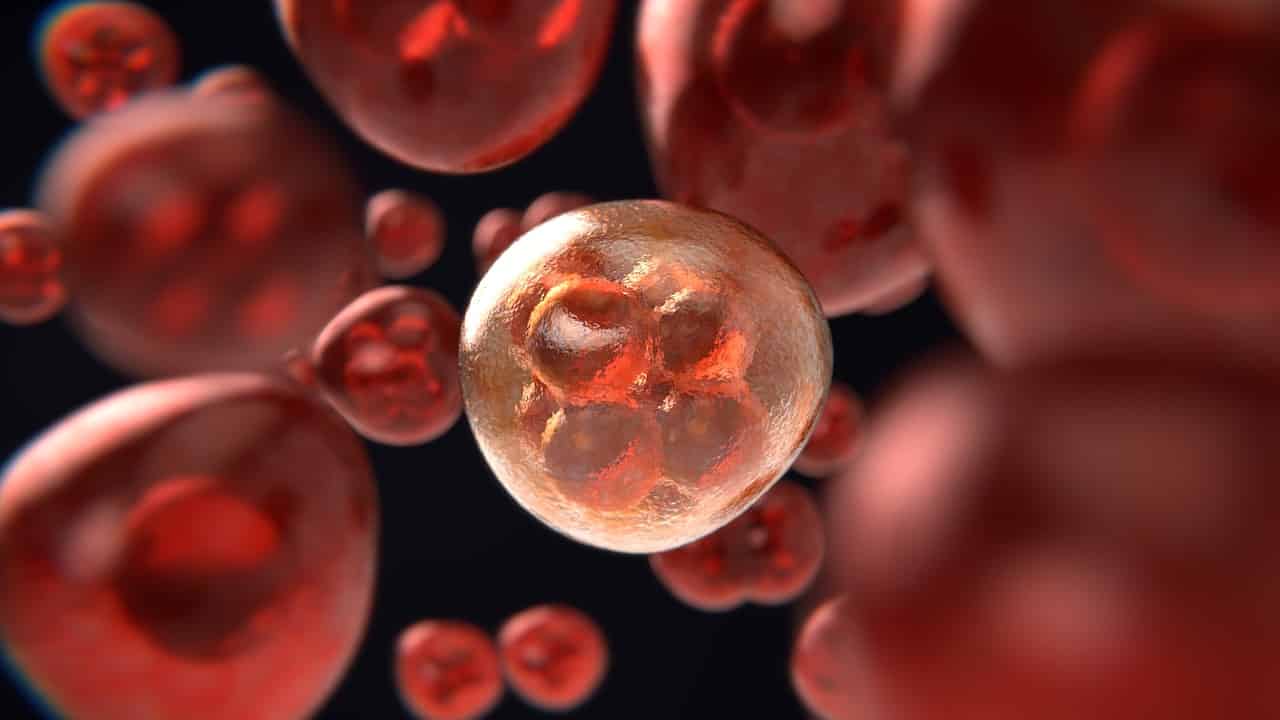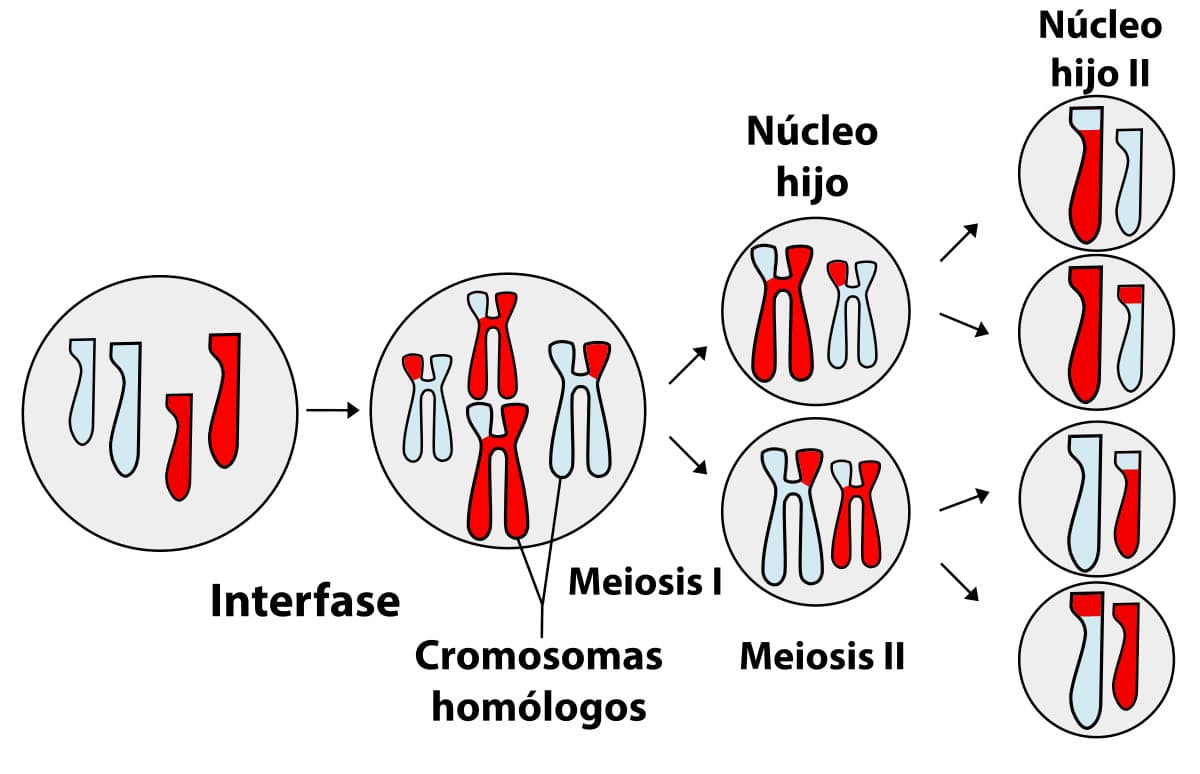
Within the world of genetics, two very important processes stand out within the correct functioning of all living beings, we are talking about mitosis and meiosis. Both processes have been the object of study and analysis for many years by professionals in the sector as a means of better understanding cell reproduction. There are many concepts and the process that differentiates between mitosis and meiosis.
Both concepts are two different forms or processes of cell division. Thanks to many studies and microscopic images of the different phases collected in various genetic studies, it is now much easier to access knowledge of these biological processes. As you read this publication, you will discover the differences between both concepts.
In the course of the cell cycle, eukaryotic cells undergo certain changes that lead them to form new cells. All this depends on the type of cell, which can be divided by the process of mitosis or meiosis. Not only will we see in this publication their main differences, but we will also explain what each of the processes consists of and what their phases are.
What is mitosis; definition and phases

This term is understood to biological process of cell division linked to somatic cell division. This type of cells of a eukaryotic organism are those that will not go through the process of becoming sexual cells. Mitosis results in two completely identical cells.
Living organisms thanks to this process, guarantee their survival due to the good growth and maintenance of their cells. This process of cellular mitosis occurs in animals as well as in plants, fungi or microorganisms.
Mitosis is a continuous cellular process where the following phases take place, which we show and explain below.
- Interface
- Prophase
- Metaphase
- Anaphase
- Telophase
The ultimate goal of mitosis is to obtain two identical cells with the same genetic information.. This information must be the same with the stem cell as well as between them. Therefore, mitosis is understood as a process of asexual reproduction, in which only a single stem cell participates.
Phases of the mitosis process

In this section, we are going to see each of the faces of mitosis that we have named in the previous point for a better understanding of this process.
Interface
This first phase is time that elapses between two mitosis or divisions of the cell nucleus. During the course of this phase, the duplication of the number of chromosomes, the DNA, occurs. Each of the DNA strands forms an exact copy of the initial one. The main objective of this copying process is that each new cell has the same amount of genetic material as the original.
Prophase
In this second phase, the DNA strands that we have talked about in the interface, take shape and condense, in what we call chromosome. The centrioles that are located in the cell, are located on opposite sides and a process begins in which thin filaments called mitotic spindle are formed.
Metaphase
These fine filaments that we were talking about, adhere to a region of the chromosome that has a responsibility to help the cell in the division of DNA. Each of these are organized in the cellular equator, each one of them glued to its copy.
Anaphase
Chromosome pairs divide and move to opposite poles of the cell, each of the daughters inherits one copy of each chromosome. In this phase, the chromosomes reach their maximum level of condensation.
Telophase
In this last phase, new membranes begin to form around the chromosomes at each pole of the cell. These will be dispersing and decompacting, little by little they will stop being visible under the microscope.
What is meiosis; definition and phases

https://es.wikipedia.org/
Meiosis is the process of cell division that results in four daughter cells. That is, it is the process of cell division, of a diploid cell and four haploids are obtained from it. The result of all this are sex cells, sperm in men and eggs in women.
phases of meiosis
As in the process of mitosis, meiosis also occurs a series of phases in terms of cell division. These phases are the ones you will see next and which we will explain later.
- Meiosis II
- Prophase I
- Metaphase I
- Anaphase I
- Telophase I
- meiosis II
- Prophase II
- Metaphase II
- Anaphase II
- Telophase II
Two nuclear divisions take place, the phases as you have been able to observe have the same name as the stages seen previously in mitosis.
Meiosis II
During the first meiotic division, the chromosomes are reflected, each of them composed of two chromatics.
- Prophase I: In this first phase, the homologous chromosomes are related and exchange genetic material.
- Metaphase I: Homologous chromosomes are located at the equator of the cell symmetrically on an imaginary line. Therefore, in the next phase, each one travels to sides of the cell.
- Anaphase I: During this third phase of meiosis I, the chromosomes attached to the mitotic spindle divide uniformly and travel until they are located as indicated in the previous phase, to one of the two poles of the cell.
- Telophase I: Groups of haploid chromosomes are formed on both sides of the mother cell, where one chromosome of each type is located. The chromosomes disperse, and begin to be rearranged by the nuclear envelope.
meiosis II
In this second division, there is no genetic duplication. Chromosomes are composed of two chromatids, which move to the equator and attach to the mitotic spindle. The two chromatids that have each of the chromosomes separate and are located at the poles.
- Prophase II: Again, the chromatin condenses and the nuclear envelope disappears.
- Metaphase II: The chromosomes are organized in a line so that each of the chromatids looks at each of the poles of the cell.
- Anaphase II: Sister chromatids separate and travel to the poles of the cell.
- Theophase II: In this phase, the chromosomes only have a single chromatid and are located at the poles of the cell, where they begin to reorganize the envelope around each one of them.
At the end of this second division process, the result of obtaining four haploid cells must be produced, in which each has half the genetic material.
Main Differences Between Meiosis and Mitosis
Once we have known what both processes consist of, we have been able to deduce some of the main differences between the two terms. Next, We are going to delve deeper into the subject and point out in a clearer way how they differ.
The main difference between the two processes is determined by the function performed by each of them.. In mitosis, the division of the nucleus of any cell of a living organism, while the process of meiosis, is carried out exclusively by cells related to the reproduction process.
Another key difference between the two concepts is the type of cell, the number and type of chromosome or genetic material, with which each of these processes works.. In mitosis, the process is of a shorter duration in which haploid cells with unpaired chromosomes are involved. In meiosis, the process is longer and involves diploid cells and in this case, paired chromosomes.
It should also be noted, that The phase of mitosis only goes through a single division, while in meiosis two phases are necessary cell division, so we can highlight another difference between the two processes.
Finally, say that There is also a difference in the outcome of each of the processes.. In mitosis after cell division, two new daughter cells that are totally identical genetically are obtained as a result. In meiosis, after two stages of division, the original cell results in four sex cells, each of which has half the number of chromosomes as the original cell. These four new cells have different genetic information.
We leave you a table below summarizing the most important parts that we have seen throughout this publication on the processes of mitosis and meiosis.
| MITOSIS |
MEIOSIS |
| type of asexual reproduction | type of sexual reproduction |
| originates somatic cells | originates sex cells |
| Produces two diploid cells | Produces four haploid cells |
| Result genetically identical cells | Result genetically different cells |
| A division of the nucleus | Two divisions of the nucleus |
| Does not introduce genetic variation | Introduces genetic variation |
| shorter process | longest process |
We hope that this publication, in which we have gradually explained the processes of mitosis and meiosis and their main differences, will help you to better understand what all this consists of.
Next, if you are interested in this type of article, we leave you here one in which we talk about the different parts of an animal cell and its main functions.